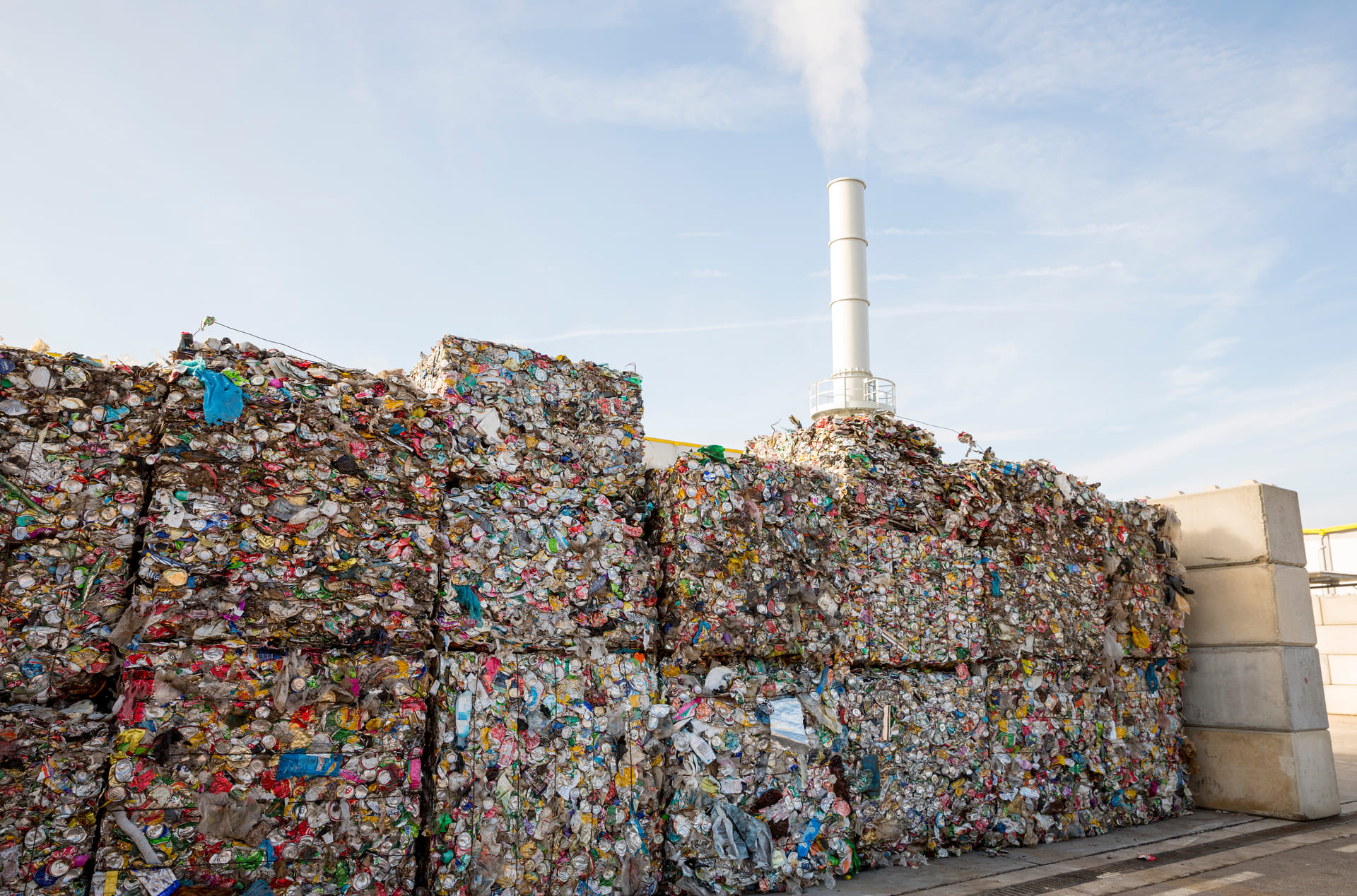Commercial Solutions
Waste to Energy
Waste-to-energy plants burn municipal solid waste (MSW), often called rubbish, to produce steam in a boiler that is used to generate electricity.
MSW is a mixture of energy-rich materials such as paper, plastics, garden waste, and products made from wood. For every 45 kilos of MSW about 38 kilos can be burned as fuel to generate electricity.
There are different types of waste-to-energy systems or technologies. The most common type is the mass-burn system, where unprocessed MSW is burned in a large incinerator with a boiler and a generator for producing electricity.

The process of generating electricity in a mass-burn waste-to-energy plant has seven stages:
- Waste is dumped from rubbish trucks into a large pit.
- A giant claw on a crane grabs waste and dumps it in a combustion chamber.
- The waste (fuel) is burned, releasing heat.
- The heat turns water into steam in a boiler.
- The high-pressure steam turns the blades of a turbine generator to produce electricity.
- An air pollution control system removes pollutants from the combustion gas before it is released through a smokestack.
- Ash is collected from the boiler and the air pollution control system.

Waste material is received in an enclosed receiving area, where it is thoroughly mixed in preparation for combustion.
Mixed waste enters the combustion chamber on a timed moving grate, which turns it over repeatedly to keep it exposed and burning.
Fine airborne particulates (fly ash) are removed in the filter baghouse. The acidic combustion gasses are neutralised with an injection of lime or sodium hydroxide.
The unburned remains of combustion the ‘bottom-ash’ are passed by magnets and eddy current separators to remove both ferrous (steel and iron) and other metals, such as copper, brass, nickel, and aluminium, for recycling. The remaining ash can be used as aggregate for roadbeds and rail embankments.
Superheated steam powers the steam turbine generator. The cooling steam is cycled back into water through the condenser or diverted as a heat source for buildings or industry. Cooled stream is reheated in the economiser and superheater to complete the steam cycle.
Activated carbon (charcoal treated with oxygen to increase its porosity) is injected into the hot gases to absorb and remove heavy metals, such as mercury and cadmium. Nitrogen oxide in the rising burn gases is neutralised by the injection of ammonia or urea. Dioxins and furans are destroyed by exposing flue gases to very high temperatures.
The energy output from Waste-to-Energy plants is about 50% renewable. Waste-to-Energy technology is one of the most robust and effective alternative energy options to reduce CO2emissions and to save limited fossil fuel resources used by traditional power plants.
Contact info@energy-concepts.co.uk for a free consultation and more information on waste-to-energy.
